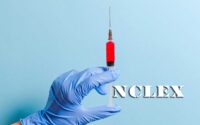Surgical Oncology MCQ
Surgical Oncology MCQ paper for the written examination is given below. Candidates who are looking for Surgical Oncology exam MCQ paper can find in this section. The applied candidates who are getting prepared for the Surgical Oncology can view this page for the Surgical Oncology Last Ten Years MCQ Papers.

Download the Surgical Oncology MCQ & Solutions & make it as a reference for your exam preparation. Take advantage of these Surgical Oncology MCQ Papers in a proper manner to get qualifying Marks. Last 5 years Surgical Oncology MCQ Papers provided here. Candidates who are applied for the above exam can check and download the Surgical Oncology MCQ Papers from here.
MCQ on Surgical Oncology
1. Most common first metastatic site for ocular melanoma :
(1) Liver
(2) Skin
(3) Brain
(4) Lung
2. As per AJCC 8th staging system for paranasal sinus tumors, orbital floor involvement comes under which T staging ?
(1) Tl
(2) T2
(3) T3
(4) T4
3. Kadish classification is used for
(1) Nasopharyngeal carcinoma
(2) Carotid body tumor
(3) Thymoma
(4) Olfactory neuroblastoma
4. Marginal mandibulectomy is absolutely contraindicated in which of the following situations ?
(1) When cartilaginous part of the bone is involved
(2) Old age patient
(3) Lesions in close proximity to bone
(4) Edentulous patients
5. Which of the following is not a vascular supply to sternomastoid flap ?
(1) Occipital artery
(2) Facial artery
(3) Superior thyroid artery
(4) Transverse cervical artery
6. Shamblin classification is used for
(1) Parapharyngeal tumors
(2) Nasopharyngeal tumors
(3) Carotid body tumors
(4) None of the above
7. Which of the following is not a part of oral cavity ?
(1) Hard palate
(2) Soft palate
(3) Anterior 2/3rd tongue
(4) Retromolar trigone
8. Which of the following statements is TRUE
(1) Radical neck dissections should be performed for the management of all locally advanced HNSCC.
(2) Complications from neck dissections may include hematoma, Seroma, Lymphedema, wound infections and dehiscence, carotid artery exposure and rupture, and damage to the VII, X, XI and XII cranial nerves.
(3) In a surgically treated tumor without radiographic evidence of lymph node metastasis, an elective neck dissection should be performed if the risk of occult metastasis to the neck nodes is greater than 50%.
(4) For patients who have had a neck dissection for HNSCC, there is no benefit from postoperative adjuvant radiation therapy.
9. Which of the following are risk factors for head and neck squamous cell carcinoma ?
(1) Tobacco use
(2) Fanconi anemia
(3) Alcohol use
(4) All of the above
10. Which of the following is the most common site of distant metastasis from head and neck cancers ?
(1) Bone
(2) Lung
(3) Thyroid
(4) Liver
11. A 58 yr male with a history of smoking 30 cigarettes per day for the last 30 years, presented with chest pain and hemoptysis and history of recent weight loss. On evaluation, a node was found positive at level IV. HRCT chest was done which showed a lesion measuring 4 x 3 cm in the lower lobe of the right lung. What is the next line of the management ?
(1) Open biopsy from the node
(2) Bronchoscopy
(3) CT guided biopsy from the lung lesion
(4) PET-CT
12. Regarding segmental anatomy of the lung, all of the following are true except
(1) Pulmonary artery and bronchial artery are central in location
(2) Pulmonary vein lies in the intersegmental area.
(3) Lymphatics lie in the intersegmental area
(4) Bronchi lie in between the segments
13. A patient with a diagnosed case of NSCLC, primary measuring 5 cm, underwent PET-CT evaluation. On PET-CT subcarinal node was found to be enlarged and was FDG-avid. What is the treatment in such a case ?
(1) CTRT
(2) NACT followed by resection surgery
(3) CT followed by response evaluation
(4) RT
14. A Patient with a 4cm primary in the lung with enlarged hilar lymphadenopathy, on evaluation has ppoFEVI = 36% of expected for age. Next step to decide the feasibility for resection is
(1) V-P scan
(2) Flight of stairs test
(3) 6 minute walk exercise test
(4) ABG analysis
15. Most important prognostic factor in malignant pleural mesothelioma is
(1) Age of the patient
(2) Resection status
(3) Tumor histology
(4) Lymph nodal status
16. Which gynecological cancer among the following, follows a relatively orderly pattern of metastatic progression, initially to primary echelon nodes in the pelvis and then to para-aortic nodes and distant sites ?
(1) Uterus
(2) Cervix
(3) Ovary
(4) Vulva
17. As per the American Cancer Society guidelines, when should cervical cancer screening should begin ?
(1) At 21 years of age
(2) At first child birth
(3) At menarche
(4) Any of the above
18. Which of the following is FALSE regarding cervical cancer in pregnancy ?
(1) Patients who are diagnosed with invasive cervical cancer shortly after a vaginal delivery and who had an episiotomy appear to be at risk for recurrence at the site of their episiotomy.
(2) Compared with other cervical cancer patients, those with cervical cancer during pregnancy have a poorer survival.
(3) Any suspicious cervical lesion observed during pregnancy should be biopsied.
(4) Conization in the first trimester of pregnancy is associated with an abortion rate of up to 33%.
19. In Lynch syndrome, which is most commonly found histology of endometrial cancer ?
(1) Endometrioid carcinoma
(2) Clear cell carcinoma
(3) Serous carcinoma
(4) Carcinosarcoma
20. What is the risk of simple hyperplasia without atypia and complex hyperplasia with atypia progressing to endometrial cancer ?
(1) 1%, 29%
(2) 3%, 15%
(3) 1%, 15%
(4) 3%, 29%
| Practice Set | MCQs |
| Quiz | Questions and Answers |
21. According to FIGO staging for endometrial cancer, positive pelvic and positive para-aortic lymph nodes belong to which stage ?
(1) TNB
(2) IC
(3) Wic2
(4) INC3
22. Maternal ingestion of Diethylstilbestrol (DES) during pregnancy is associated with which pathological type of vaginal cancer ?
(1) Clear cell
(2) Mucinous
(3) Adenosquamous
(4) Papillary
23. Which of the following does not fit in the criteria for a good candidate for sentinel lymph node biopsy (SLNB) in vulvar cancer ?
(1) Tumor diameter of less than 4 cm
(2) Tumor invasion more than 1 mm
(3) No obvious metastatic disease
(4) Poorly differentiated adenocarcinoma
24. The most prominent acute complication of radical radiotherapy for vulvar carcinoma is
(1) Radiation enteritis
(2) Radiation dermatitis
(3) Radiation cystitis
(4) Lymphedema of lower limb
25. Accepted uses of CA 125 include all EXCEPT :
(1) Screening for ovarian cancer in general population
(2) Assisting in determining whether a cancer of unknown primary origin has arisen from the ovary
(3) Monitoring response of ovarian cancer to systemic chemotherapy
(4) Helping to determine whether a pelvic mass is malignant
26. FALSE regarding risk reducing salpingo-oophorectomy (rrSO) is :
(1) rrSOQ should be considered for women with germline BRCA1/2 and BRIP1 mutations
(2) Women with a strong family history of either ovarian or breast cancer who have not undergone genetic testing should consider rrsO
(3) rrSO in Lynch syndrome includes hysterectomy
(4) Pathologic processing of rrSO includes serial sectioning of the entire fallopian tube and ovaries at 5-mm intervals
27. What percent of patients with advanced ovarian carcinoma who enter into remission after surgery and platinum- and taxane-based chemotherapy will ultimately experience relapse ?
(1) 40%
(2) 50%
(3) 60%
(4) 70%
28. Which study among the following studies for ovarian cancer was not based on Anti-Angiogenesis inhibitors ?
(1) AURELIA
(2) OCEANS
(3) ICON-7
(4) EORTC 5595
29. After molar evacuation, the diagnosis of GTN is based on the following FIGO guidelines except
(1) A plateau in B-hCG values plus or minus 10% on four tests over 3 weeks
(2) A >10% increase in B-hCG levels for three or more tests over at least 2 weeks
(3) Persistence of B-hCG levels for >6 months after molar evacuation
(4) Radiological evidence of choriocarcinoma
30. Smoking is associated with decreased risk of
(1) Colonic carcinoma
(2) Cholangiocarcinoma
(3) Endometrial carcinoma
(4) Gall bladder carcinoma
31. Lifetime risk of breast cancer in BRCA 1/2 patients are :
(1) 20-30%
(2) <10%
(3) 50-70%
(4) 100%
32. Criteria for referral for genetic counselling of individuals at increased risk for BRCAI/2 associated hereditary breast cancer except.
(1) Personal history of breast cancer diagnosed <= 45 yrs
(2) Personal history of breast cancer and Ashkenazi Jewish ancestry
(3) Personal history of triple negative breast cancer <=60 yrs
(4) Personal history of triple negative breast cancer <= 40 yrs
33. Gail Model includes all except
(1) Age
(2) Age at menarche
(3) Age at menopause
(4) Age at 1st child birth
34. 80-85% of cases with DCIS are detected because of
(1) Palpable mass
(2) Paget’s disease
(3) Associated Mammographic micro calcifications
(4) Incidental microscopic finding in breast tissue removed for other abnormality
35. TAILORx trial [Trial Assigning Individualised Options for Treatment (Rx)] enrolled patients with all except
(1) Hormone Receptors positive
(2) Hormone Receptors negative
(3) Node Negative
(4) Her-2u negative
36. Absolute contraindications for Breast Conserving Surgery are all except
(1) Active connective tissue disease involving the = skin [esp. Scleroderma and Lupus]
(2) Prior RT to the breast or chest wall
(3) Diffuse suspicious, malignant appearing micro calcifications
(4) Widespread disease that cannot be incorporated by excision through a single incision that achieves negative margins with satisfactory cosmetic result
37. Milan III Trial includes all except
(1) Tumors of size 4 cm or less
(2) Randomised cases to either QUART or only Quadrantectomy + Axillary dissection
(3) 10yrs risk of in breast recurrence (IBTR) was compared
(4) Conducted by Umberto Veronesi
38. Indications for Sentinel Lymph Node Biopsy except :
(1) Clinically Node negative axilla
(2) Inflammatory Breast cancer
(3) Unifocal or Multicentric disease
(4) Previous FNAC or core biopsy
39. Most common site of phyllodes tumor metastasis is
(1) Lung
(2) Liver
(3) Brain
(4) Bone
40. High risk lesions of breast (R.R. = 4-5 times) includes all except
(1) ADH- Atypical Ductal Hyperplasia
(2) ALH- Atypical Lobular Hyperplasia
(3) Papilloma
(4) None of the above
41. Which gene mutation is associated in basal cell carcinoma ?
(1) Sonic hedgehog
(2) MEK1
(3) Human patched gene
(4) NFI
42. Organ transplant recipients have high risk of development of SCC than the general population by how many folds ?
(1) 10-20 folds
(2) 30-50 folds
(3) 60-250 folds
(4) None of the above
43. Verrucuos carcinoma is associated with which serotypes of HPV ?
(1) Serotypes 16 & 18
(2) Serotypes 6 & 11
(3) Serotypes 31 & 52
(4) Serotypes 52 & 68
44. What percentage of patients with non melanoma skin cancer (NMSC) will develop another NMSC within 5 years ?
(1) 10%
(2) 20%
(3) 30%
(4) 40%
45. Genetic counseling referral criteria for hereditary melanoma :
(1) Three or more siblings with actinic keratosis
(2) Two relatives on the same side of the family with melanoma and prostate cancer
(3) Pancreatic cancer and melanoma on the same side of the family
(4) Parent with multiple skin cancers



